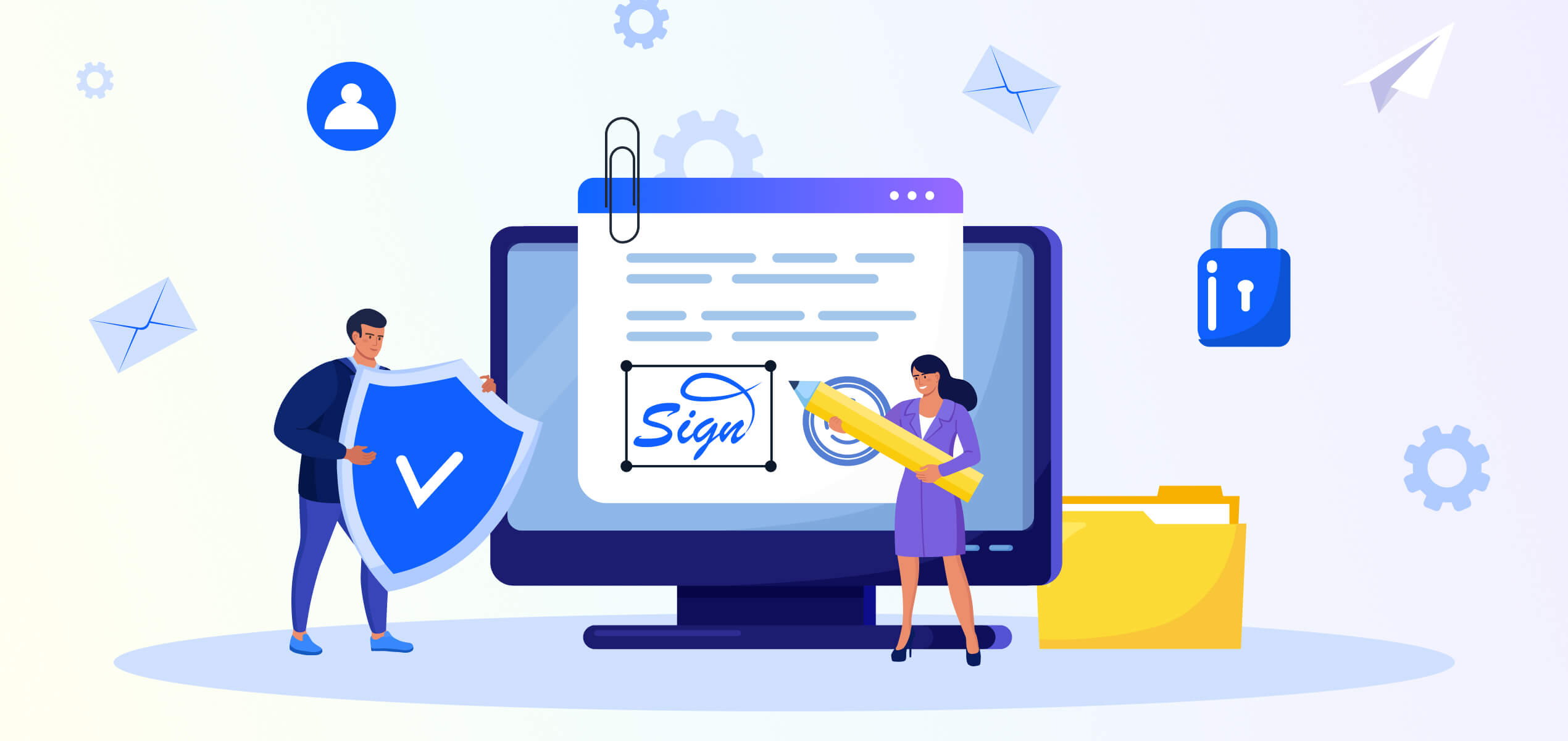Signing documents has evolved from using pen and paper to clicking a button on a screen.
But with this shift come some important questions: Can you really just upload a picture of your handwritten signature and make it legally binding? Does typing out your name count as a legitimate signature?
As digital signatures become more common, it’s natural to wonder if they hold up in court and whether they truly protect your sensitive information. Let’s find out more about the legalities of digital signatures and explore how legit and secure they really are:
But First, What Are Digital Signatures?
A digital signature is an electronic method of verifying the authenticity and integrity of a document. Unlike simple electronic signatures, which might include a scanned image of a handwritten signature, digital signatures use advanced encryption technology to create a unique identifier for the signer.
When implemented correctly, digital signatures provide:
- Authentication: Confirming the signer’s identity.
- Integrity: Ensuring the document has not been altered after signing.
- Non-repudiation: Preventing the signer from denying their signature.
Are Digital Signatures Legally Valid?
Digital signatures are widely recognized as legally binding across the globe. Several frameworks have established their validity, including:
- The ESIGN Act (United States) Enacted in 2000, the Electronic Signatures in Global and National Commerce Act (ESIGN Act) grants digital signatures the same legal standing as handwritten ones. It ensures that agreements signed electronically are enforceable, provided both parties agree to the digital method.
- UNCITRAL Model Law The United Nations Commission on International Trade Law (UNCITRAL) promotes uniformity in electronic commerce laws. Its model law provides a framework for recognizing secure digital signatures globally.
- Information Technology Act (India): In India, digital signatures are governed by the Information Technology Act, 2000. The Act recognizes digital signatures as legally valid and provides the framework for their use in electronic transactions, ensuring that they are on par with physical signatures for contracts and documents. The Act also includes provisions for the use of digital signatures in various applications, including e-governance and legal processes, making them a trusted tool in India’s digital ecosystem.
These legal frameworks ensure that online secure digital signature methods are valid and enforceable in most jurisdictions, making them a trusted solution for businesses and individuals alike.
What Security Features and Standards Do Digital Signature Softwares Need To Have?
Security is a critical factor when choosing a digital signature solution. The best platforms employ robust measures to protect against fraud, tampering, and unauthorized access. Here’s how secure digital signatures achieve this:
- Public Key Infrastructure (PKI) Digital signatures rely on PKI, a cryptographic system that uses two keys: a private key for signing and a public key for verification. This ensures that only the intended signer can create the signature and that it can be validated by anyone with access to the public key.
- Encryption ensures the confidentiality of the signed document. Even if the document is intercepted, the information remains inaccessible without the decryption key.
- Tamper-Evident Technology Any alteration to a digitally signed document invalidates the signature, making tampering immediately detectable.
- Audit Trails Most digital signature platforms provide detailed audit trails, recording information such as the signer’s identity, timestamp, and IP address. This transparency enhances accountability and trust.
How to Ensure Legal and Secure Use of Digital Signatures
To maximize the benefits of digital signatures while ensuring compliance and security, follow these best practices:
- Choose a Reputable Platform Select a trusted digital signature provider that complies with relevant legal standards, such as FlexiSign, DocuSign, Adobe Sign, or HelloSign. Look for features like PKI, encryption, and tamper-proof technology.
- Understand Local Laws Familiarize yourself with the legal requirements for digital signatures in your jurisdiction. Ensure your chosen platform meets these criteria.
- Verify Identity Use identity verification measures, such as two-factor authentication (2FA), to confirm the signer’s identity before accepting a digital signature.
- Maintain Records Store signed documents securely and ensure they include an audit trail for future reference, which is a feature the right platform will already have.
- Educate Stakeholders Provide training to employees and clients on how to use digital signature tools effectively and securely.
No Doubts Here: Digital Signatures Are Legal, Secure, and Future-Ready
As technology advances, digital signatures are expected to become even more secure and versatile. Innovations like blockchain could further enhance their transparency and reliability, while artificial intelligence may streamline verification processes. Additionally, growing regulatory support will likely expand their adoption in industries beyond finance, healthcare, and real estate.
Embrace digital signatures today to future-proof your operations and simplify your document management processes.
FAQs
Yes, digital signatures are legally recognized in many countries, including the U.S., EU, India, and globally. They have the same legal standing as handwritten signatures when executed under appropriate legal frameworks.
Digital signatures use encryption technology to verify the signer’s identity, ensure the document’s integrity, and prevent tampering, making them more secure than traditional signatures.
Yes, digital signatures are highly secure. They rely on encryption, public key infrastructure (PKI), tamper-evident technology, and audit trails to protect documents from fraud and unauthorized access.
Reputable platforms like FlexiSign, DocuSign, Adobe Sign, and HelloSign comply with legal standards and provide robust security features, such as encryption and audit trails.




